01.
Purchasing Tickets and Boarding

Buy your ticket(s) online beforehand, and then get on board at any bus stop.
The "Sky Hop Bus" is a red, double-decker, open-top sightseeing bus that offers tours around Tokyo where you can get on and off whenever you like. You can take in famous sightseeing spots right from your seat on its spacious and roofless upper deck. Gaze over Tokyo's beautiful scenery, get off at any sightseeing destination that grabs your interest, wander around, eat, play, and then get back on. Freestyle your Tokyo tour and take your fill of everything it has to offer.

The Sky Hop Bus is a spacious, roofless, open-top bus. From the comfort of your seat on the upper deck, you'll enjoy the sights of Tokyo’s iconic districts and landmarks, such as Asakusa, Tokyo Skytree, Odaiba, the Imperial Palace, Marunouchi, Ginza, and so on. Tokyo is a kaleidoscopic city with different vibes in each district. There's also a plethora of photo spots you can snap pictures of right from the bus window.
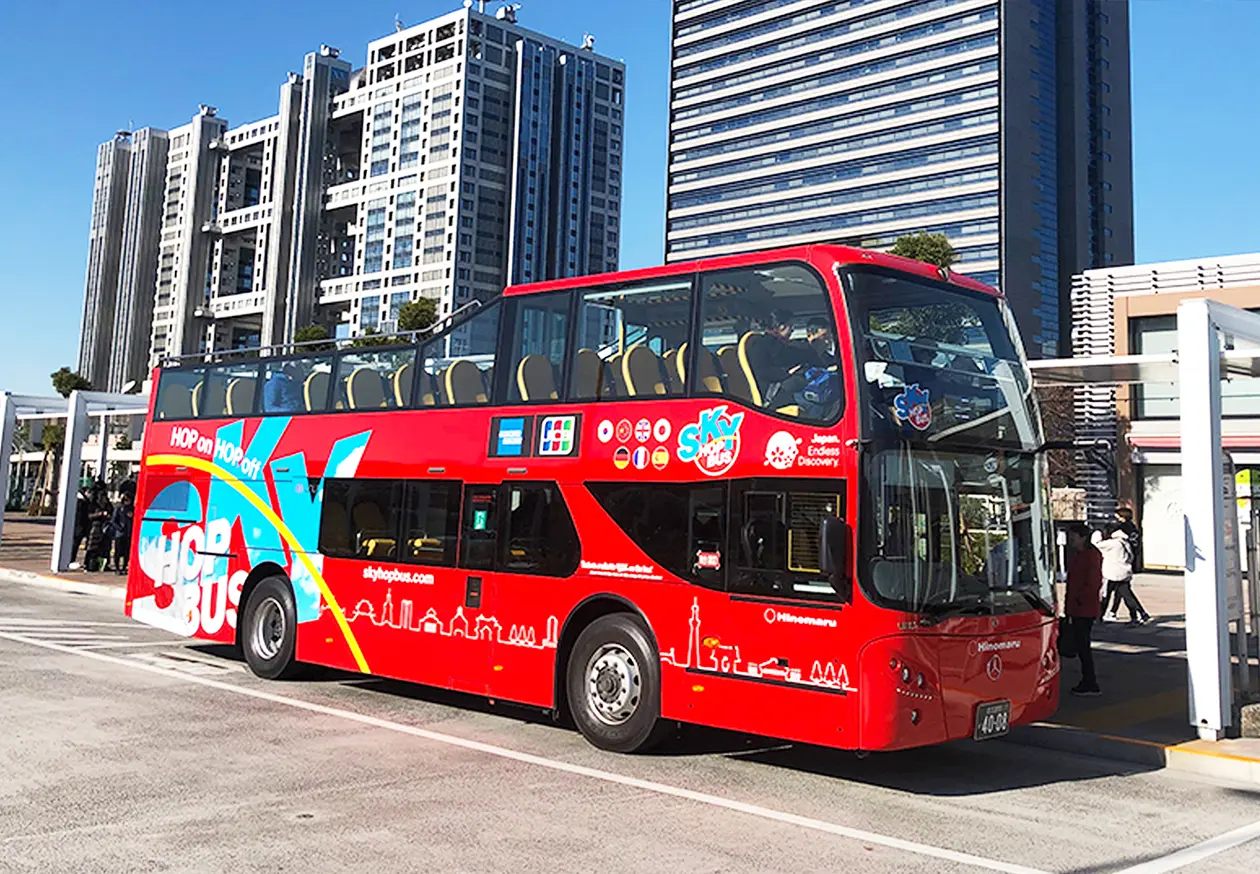
The Hop-on Hop-off Bus Route is a bus tour where you get on and off whenever you like. You can hop on and off the bus as many times as you want at any of the stops, giving you the freedom to plan your own sightseeing itinerary. Enjoy the sights on the upper deck right from the bus window, hop off when you're near your sightseeing destination, and get back on whenever you like. Take this pleasant cruise around the many must-see attractions Tokyo has to offer, and if a particular spot catches your interest, feel free to get off and walk around. You can enjoy sightseeing at your own pace.

Free audio commentaries are available for a variety of different sightseeing destinations. If you put on our provided earphones, you can listen to a fun, in-depth commentary from a guide who knows all there is to know about Tokyo. The audio guide is available in Japanese, English, Chinese, Korean, Spanish, French, and German. Additionally, thanks to its GPS technology, the audio commentary will start to play with perfect timing when a must-see attraction is near. Wouldn't you like to give your ears a taste of these charming attractions too?
Our bus tours offer three routes. Each route travels around popular Tokyo landmarks. No matter which route you're on, you can freely get on and off at any stop. If you get off close to somewhere you'd like to explore, please feel free to enjoy other sightseeing spots in the area as well.
Tokyo offers a wealth of sights to see, and that's precisely why this double-decker roofless bus is the perfect way to take them in. Let's pick a route that grabs your interest. There are a total of 18 bus stops throughout Tokyo. You're free to get on and off at any of these stops, and you can even transfer between different routes.
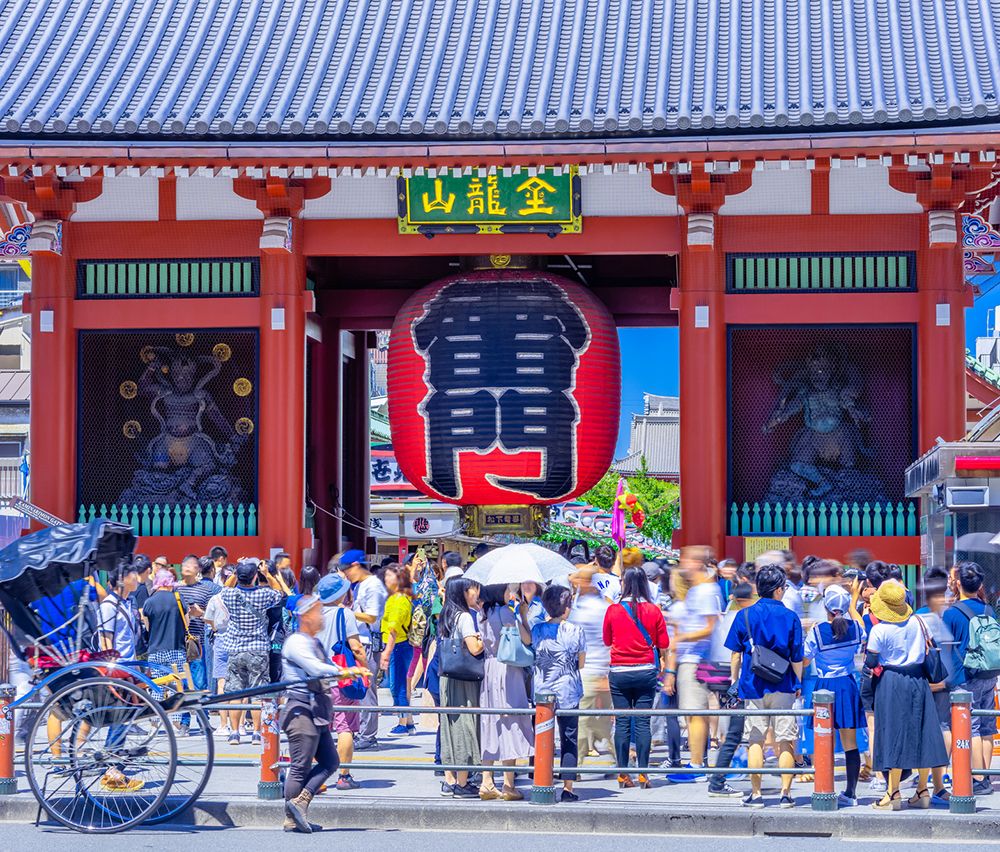
This route mainly travels around the must-see attractions on the eastern side of Tokyo. This route offers the most authentically Japanese experience as it focuses on Tokyo’s "Shitamachi" or "Old Town", as well as a variety of historic areas.
Course Details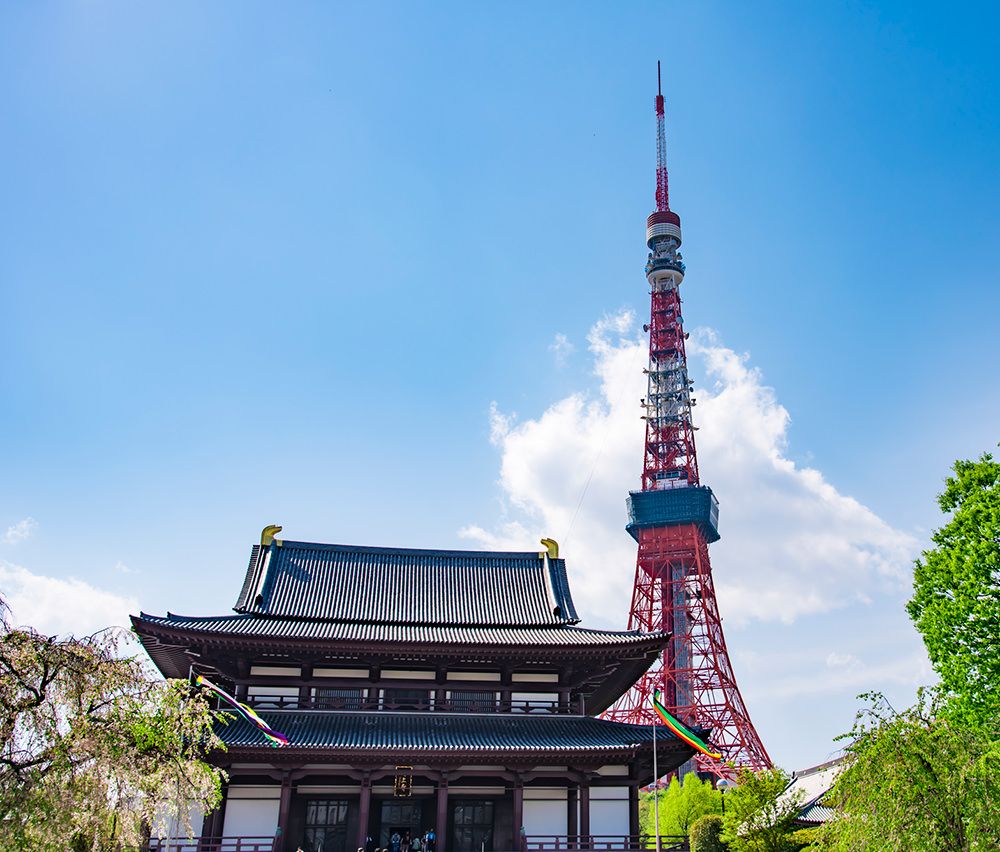
This route mainly travels around the must-see attractions in the bay area and on the southern side of Tokyo. This route offers an enjoyable and well-balanced tour of well-known landmarks as well as a view of Tokyo Bay from Rainbow Bridge.
Course Details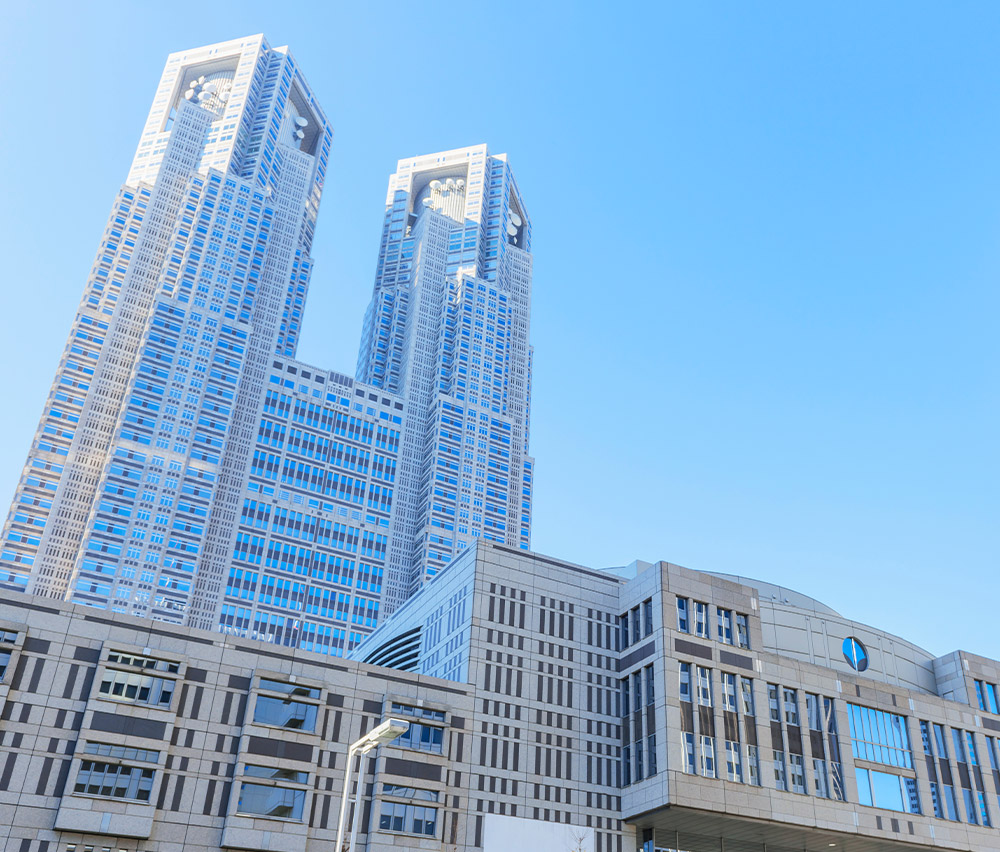
This route mainly travels around the must-see attractions on the western side of Tokyo. You can enjoy seeing the world-famous Scramble Crossing from the upper deck. This route offers an enjoyable tour of the urban scenery which represents Japan.
Course Details**You can transfer over to any of the other bus routes at the "Marunouchi Mitsubishi Building" bus stop.
This route travels around a variety of must-see attractions including: Senso-ji Temple in Asakusa, well-known for its giant lantern at the Kaminarimon gate; Ryogoku, a hub for sumo culture; Tokyo Skytree, the city’s latest landmark; Ueno, famous for both its zoo and Ameyoko shopping street; and Akihabara, which is Japan’s premier spot for electronics as well as a renowned destination for anime enthusiasts.
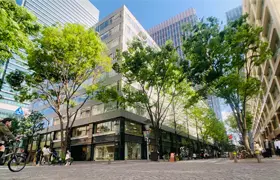
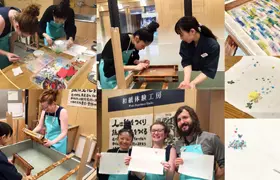
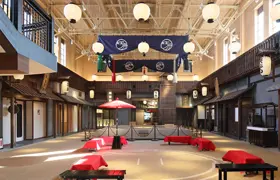
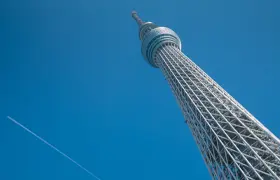
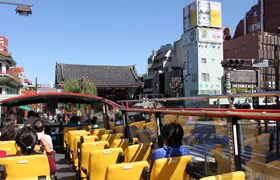
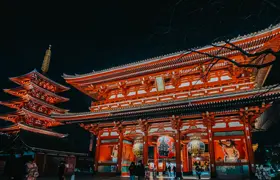


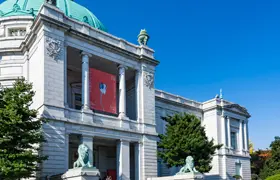
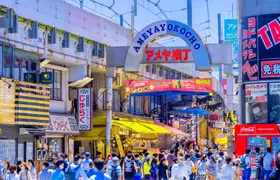
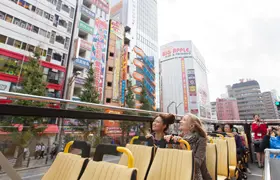
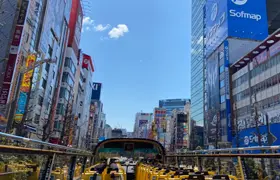
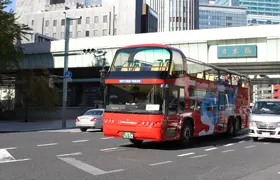

This route offers a wonderfully balanced way to experience both old and new parts of Tokyo. The highlight of this route is the view from Tokyo’s Rainbow Bridge and it also features: Tokyo Tower, the city’s classic landmark; Tsukiji, which was once the largest fish market in the whole of Japan; Ginza, with its neatly lined up luxury brand stores; and Odaiba, which showcases the latest in leisure sports and activities.
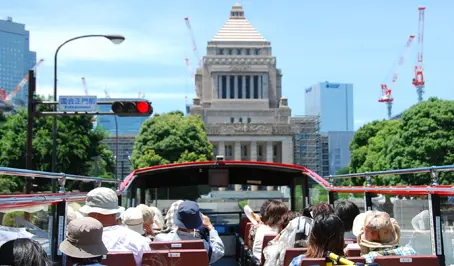
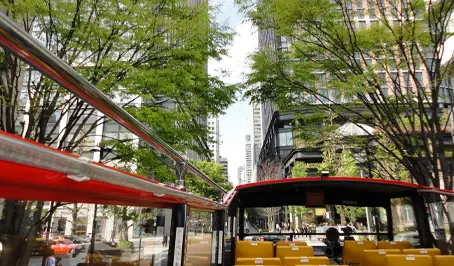
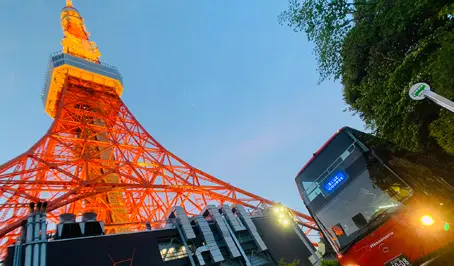
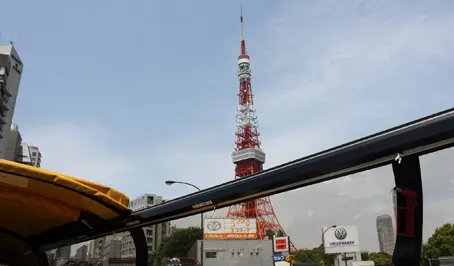
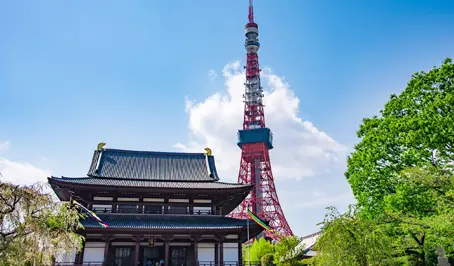
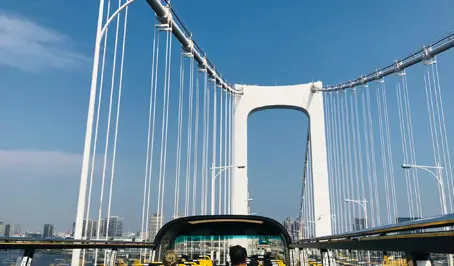
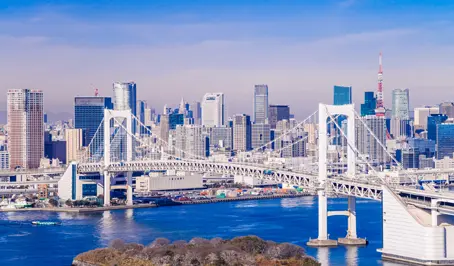
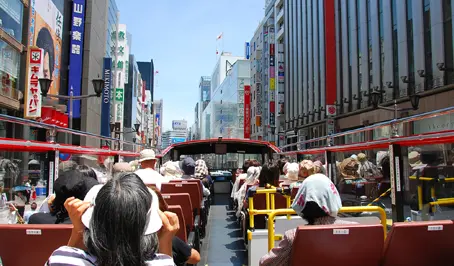
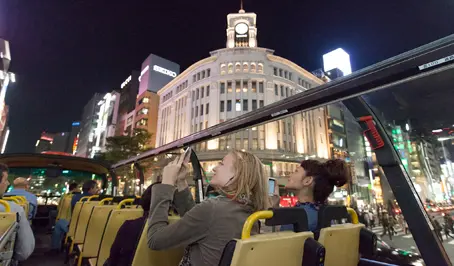
This route offers a way for you to fully enjoy the dynamic side of Tokyo's urban life. You'll enjoy seeing Shibuya’s Scramble Crossing from the roofless upper deck, and at night you'll get to see Shinjuku, Tokyo's largest downtown area, sparkling and shining with neon lights. You'll also enjoy checking out Shibuya, home to Japan's latest trends, and take in the view of Tokyo Tower, the city's classic landmark.

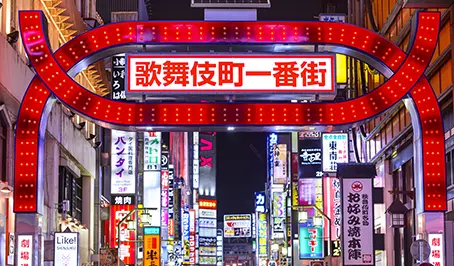
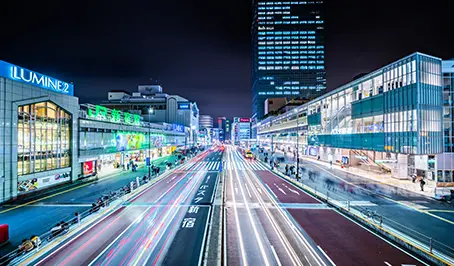
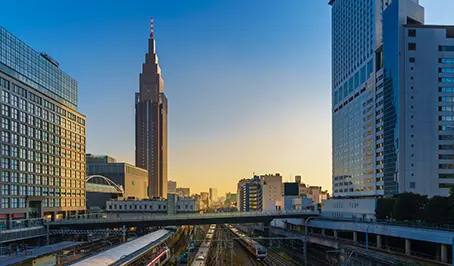
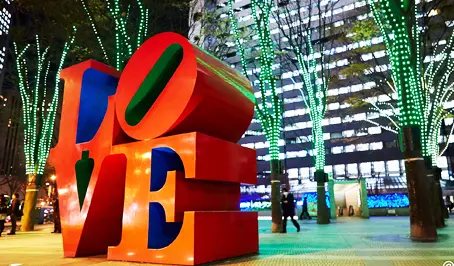
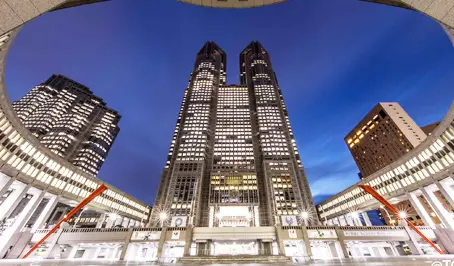
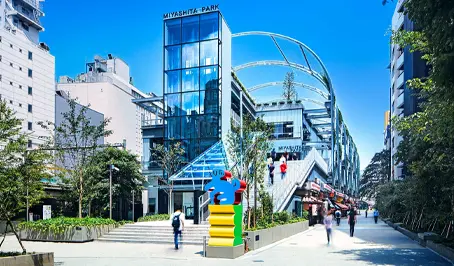
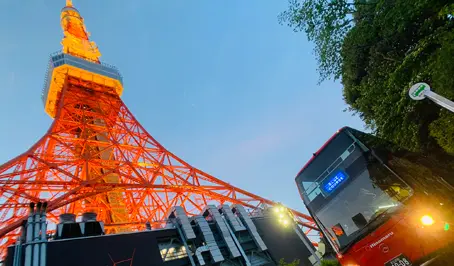
Have you decided which tour route you'd like to pick? You can start your tour by getting on a bus from any bus stop you like. Here is our guide on how to ride with the Sky Hop Bus.

Buy your ticket(s) online beforehand, and then get on board at any bus stop.
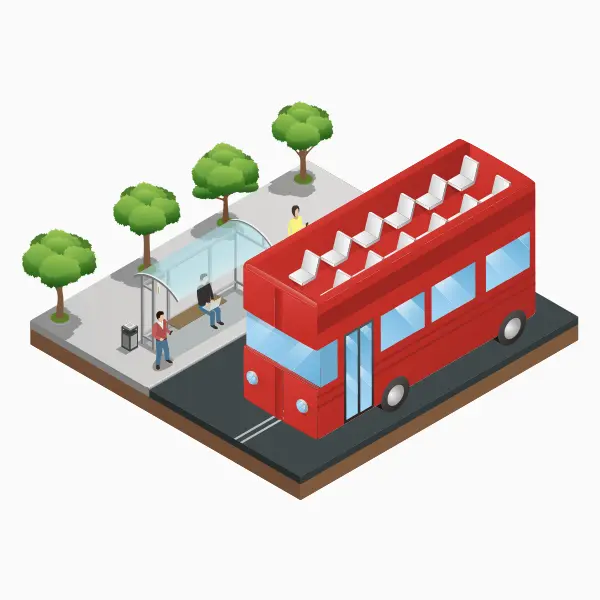
Enjoy sightseeing while riding on the upper deck. Get off at any bus stop.
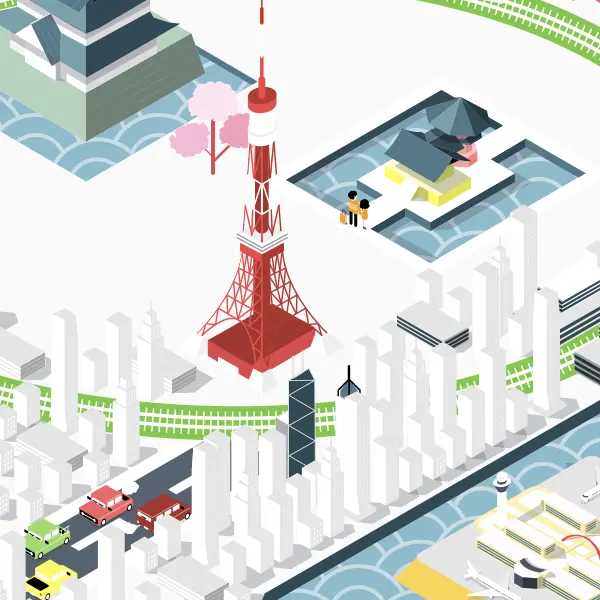
Feel free to sightsee and explore the nearby area of any destination you like, drink tea, etc.

Hold up your ticket's QR code at any bus stop to get back on.
Get a 10% discount by purchasing your tickets online!